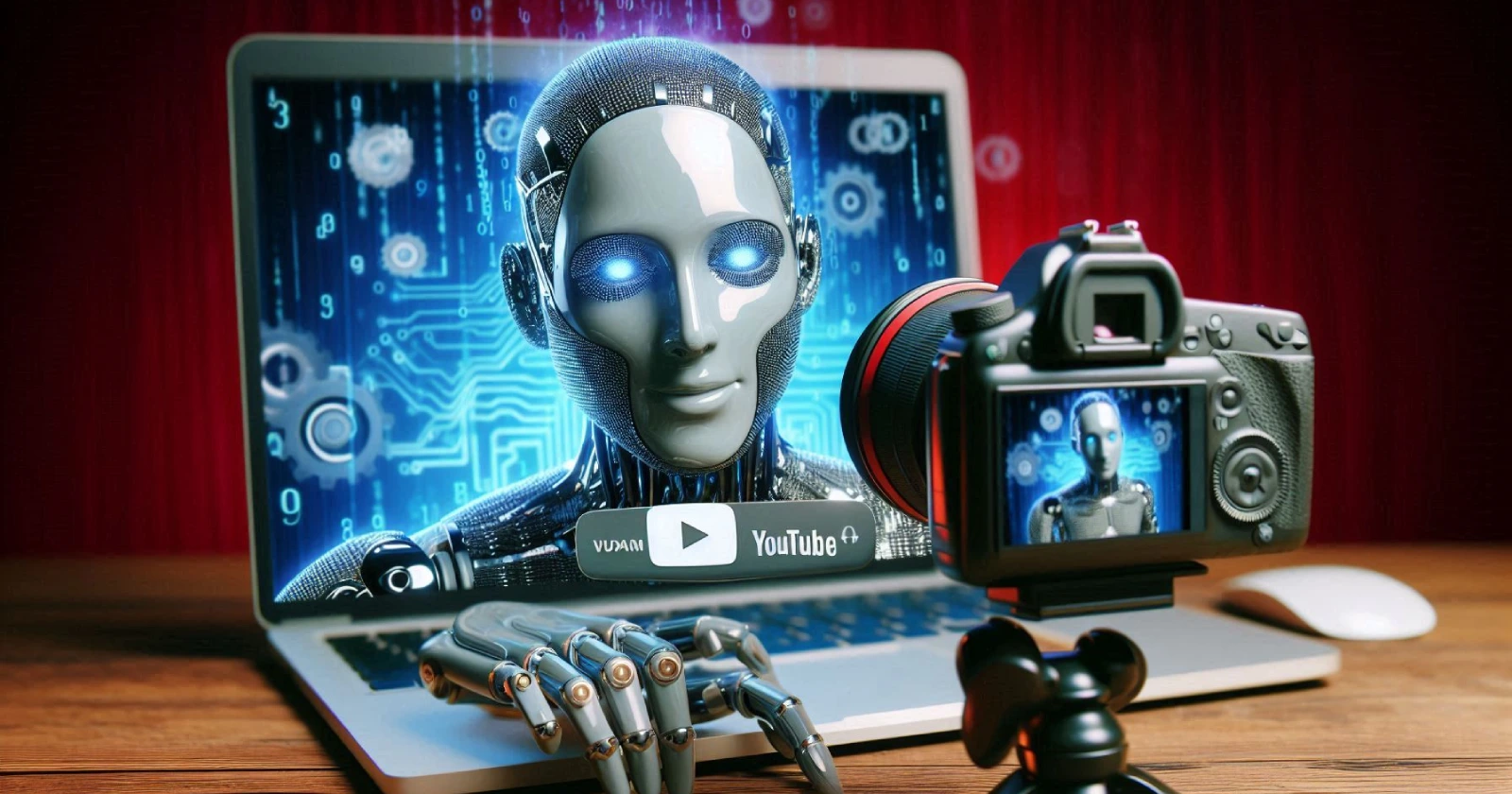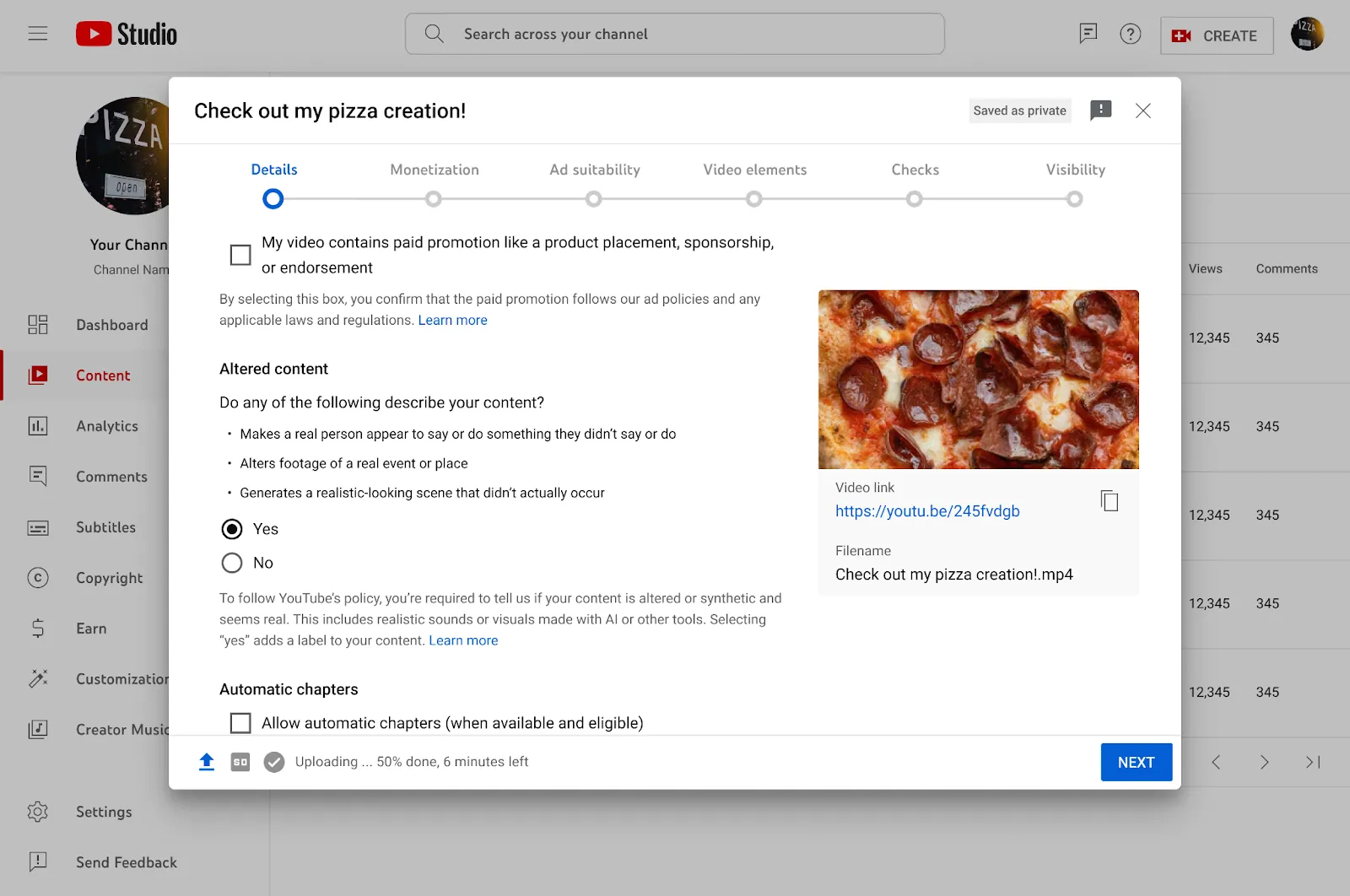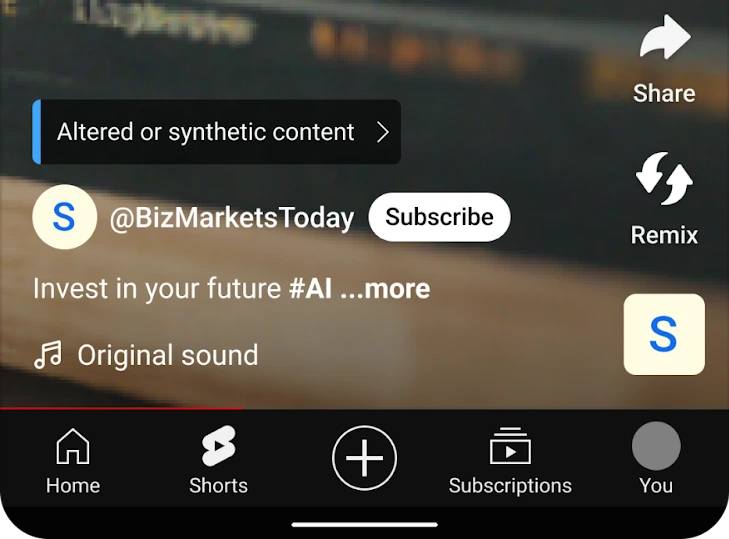With each passing year, AI-powered tools are becoming smarter, faster, and more widely accessible. From writing text to visualizing complete scenes based on keywords, AI can do seemingly everything. Since AI-generated content is clearly inevitable and even attempting to take over social media, YouTube has taken significant steps to address the challenges and opportunities presented by this technology. This comprehensive guide will explore YouTube’s policies, disclosure requirements, and the impact of AI on creators and viewers alike.
YouTube’s approach to AI content
YouTube recognizes the transformative potential of generative AI in content creation. To maintain a transparent and healthy ecosystem, the platform has introduced new tools and policies to address AI-generated and altered content. YouTube is embracing AI responsibly while prioritizing transparency, introducing new disclosure requirements and labels for AI-generated content. The platform aims to strike a delicate balance between fostering innovation and maintaining viewer trust and content integrity. In short, YouTube is welcoming AI content with open arms, as long as the channel owners follow the necessary steps that we’ll discuss more about in this article.
Disclosure requirements for AI content
YouTube now requires creators to disclose when their content is meaningfully altered or synthetically generated, especially if it appears realistic. This includes content that makes a real person appear to say or do something they didn’t, altered footage of real events or places, and generated realistic-looking scenes that didn’t actually occur.
Examples of content requiring disclosure include digitally altering a face to replace one individual with another, modifying famous movie scenes to include celebrities who weren’t in the original, simulating audio to make it sound like a medical professional gave advice they didn’t actually provide, and creating realistic depictions of events that didn’t happen, such as a missile being fired at a real city.
However, not all AI-assisted content requires disclosure. Unrealistic or fantastical content, like someone riding a unicorn through a fantasy world, doesn’t need to be disclosed. Similarly, minor aesthetic edits such as color adjustment or lighting filters, production assistance like using AI for video outlines or scripts, caption creation, and video or audio enhancement don’t require disclosure.
How to disclose AI content on YouTube
Creators can disclose AI-generated or altered content during the upload process in YouTube Studio. The process is straightforward: you can go to YouTube Studio on a computer, begin the upload process, and in the Details section, under “Altered content,” select “Yes” to respond to disclosure questions. Then complete other video details as usual. It’s worth noting that YouTube’s own AI tools like Dream Track or Dream Screen automatically disclose AI use.
Labels for AI-generated content
After disclosure, YouTube applies labels to inform viewers about the nature of the content they’re watching. There are two main types of labels. The standard label appears in the expanded video description for most AI-generated or altered content. Here’s a screenshot of how this disclaimer shows up in the description box:
A more prominent label is applied to videos on sensitive topics like health, news, elections, or finance. This label appears more visibly in the video player, ensuring that viewers are clearly informed about the nature of the content they’re consuming on these critical subjects.
As you’d probably agree, this decision is a wise one. I, and likely many others, don’t check the description for every video we watch. So having the AI label appear in the video player itself for such topics is a no-brainer.
Will AI-generated content be suppressed?
If you are concerned about the potential impact of disclosing AI use on their content’s performance, don’t fret! YouTube has made it clear that disclosing content as AI-generated or altered does not limit a video’s audience or affect its eligibility to earn money. This policy aims to encourage transparency without penalizing innovation.
However, failing to disclose when required can have consequences. YouTube may proactively apply a non-removable label to undisclosed content if they detect AI use. Moreover, creators who consistently fail to disclose may face more severe penalties, including content removal or suspension from the YouTube Partner Program. This underscores the importance of honesty and transparency in content creation.
AI Content and the YouTube Partner Program
The use of AI in content creation doesn’t automatically disqualify a channel from monetization. However, creators must still adhere to YouTube’s monetization policies. The key considerations are that content must be clearly original, and YouTube should be able to determine that the creator made the content. Disclosure is expected when content is altered or synthetic. This approach allows for innovative use of AI while maintaining the integrity of the Partner Program.
Privacy concerns and AI content
Recognizing the potential for misuse of AI technology, YouTube has expanded its privacy request process to address concerns related to AI-generated content that simulates a person’s face or voice. Users can now request the removal of AI-generated content that mimics their face or voice. YouTube evaluates these requests based on factors like the content’s realism, identifiability of the person, and whether it’s parody or satire involving public figures.
Additionally, if a creator’s channel is being impersonated, they can report the offending channel directly to YouTube. This process helps protect individuals’ rights and identities in the age of deepfakes and AI-generated content.
YouTube’s AI-powered creation tools
YouTube isn’t just regulating AI use; it’s also embracing the technology to empower creators. The platform has introduced its own AI-powered tools to assist in content creation. Dream Track is an AI tool for music creation in Shorts, while Dream Screen is an AI-powered tool for generating video backgrounds. As mentioned earlier, these tools automatically disclose the use of AI, simplifying the process for creators and ensuring transparency for viewers.
The Future of AI on YouTube
YouTube’s approach to AI content is continually evolving. The platform has committed to ongoing development and refinement of policies around AI-generated content. This includes expanding disclosure tools and labels to more devices and formats. YouTube aims to balance innovation with responsible use of AI technology, recognizing that this field is rapidly advancing and policies must adapt accordingly. There are already dozens of channels utilizing AI to push content on the platform. In fact, some creators are even monetizing the content and earning quite fairly. Here’s a one of the many such videos that shows how AI content can help you generate revenue from YouTube:
Tips for creators using AI
If you’re a creator looking to incorporate AI into your content, there are several best practices to keep in mind. Transparency is key – be open about AI use in your content. Familiarize yourself with YouTube’s disclosure requirements and use the built-in disclosure tools during the upload process. Stay informed about updates to YouTube’s AI policies, as this is a rapidly evolving area. Finally, consider the ethical implications of using AI-generated content, especially for sensitive topics. Responsible use of AI can enhance creativity without compromising trust.
How to find AI Content on YouTube
While YouTube doesn’t currently offer a direct filter for AI-generated content, you can employ several strategies to find it. Searching for keywords like “AI-generated,” “synthetic,” or “deepfake” along with your topic of interest can yield results. Look for channels that specialize in AI-generated content or experiments. Checking video descriptions for AI disclosure labels can also be helpful. Using YouTube’s filter options to sort by “Upload date” can help find recent AI content, as it’s becoming more prevalent.
Finding non-AI content on YouTube
For those specifically looking for non-AI content, there are also a few strategies available. Look for content from established creators or official channels known for producing original, non-AI content. Checking video descriptions and comments for any mentions of AI use can provide additional context. Using YouTube’s filter options to find older content (pre-dating widespread AI use) on your topic of interest can also be an effective approach.
I know that these “strategies” aren’t really ideal, but unless and until YouTube provides a dedicated filter for AI content, you’ll have to manually view videos to determine if they’re using AI-generated content or not. I’m skeptical about YouTube even adding a filter for AI content. If you look at the state of Google Search, despite the internet being flooded with AI-generated articles, Google is yet to provide any filter to sort through the mess. In fact, Google itself has added AI Overviews that summarizes information from webpages and serves it on top of the search results. So it’s highly likely that YouTube will follow in the same footsteps and keep AI-generated content mixed with content made by humans. The only good thing here is that creators will have to disclose the use of synthetic content.
Conclusion
Let’s face it – AI is shaking things up on YouTube big time. It’s like we’ve unlocked a new level in the content creation game, and everyone’s trying to figure out the rules. YouTube’s doing its best to keep up, rolling out new policies faster than you can say “algorithm.” But here’s the thing – it’s not just about following rules. It’s about finding that sweet spot between mind-blowing AI wizardry and keeping it real with your audience.
For creators, this AI revolution is both exciting and a bit nerve-wracking. It’s like having a super-powerful tool that can either make your content shine or potentially backfire if not used thoughtfully. My advice? Embrace the tech, but don’t lose your human touch. Your unique perspective and creativity are still what will make your content stand out in a sea of AI-enhanced videos.
And for all of us viewers out there, we’re in for a wild ride. We’ll be seeing stuff that’ll make us go “Wow, is that even possible?” But it’s also on us to stay savvy. Look for those disclosure labels, ask questions, and remember that not everything that looks real is real.
The future of YouTube? It’s going to be a mix of human creativity and AI assistance, and I, for one, am pumped to see where it goes. We might see AI co-hosts, mind-bending special effects, or even entire channels run by AI (scary or cool? You decide!). But at the end of the day, I believe it’s the human stories, emotions, and connections that’ll keep us coming back for more.
So, whether you’re a creator or a viewer, buckle up! The YouTube of tomorrow is going to be one heck of a ride. Just remember to bring your creativity, your critical thinking, and maybe a pinch of skepticism along for the journey. After all, in this brave new world of AI and content, the most powerful tool we have is still our own human judgment.
Featured image: AI-generated using Microsoft Designer
TechIssuesToday primarily focuses on publishing 'breaking' or 'exclusive' tech news. This means, we are usually the first news website on the whole Internet to highlight the topics we cover daily. So far, our stories have been picked up by many mainstream technology publications like The Verge, Macrumors, Forbes, etc. To know more, head here.





